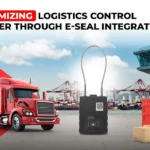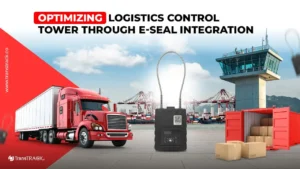Know the Components, Signs, and How to Maintenance Forklift in Good Condition!
Posted on June 4, 2024 by Nur Wachda Mihmidati

Forklifts are vital tools in the transportation and warehousing industry that require regular maintenance to maintain optimal performance and operational safety. By following the correct maintenance guidelines, you can not only extend the life of your forklift but also avoid unnecessary repair costs. This article TransTRACK will discuss practical steps in maintaining a forklift to keep it operating at high efficiency and reduce the risk of disruption in daily activities.
Key Forklift Components that Need to Be Maintained
Maintaining a forklift regularly is essential to ensure optimal performance and longevity of the machine. Here are the main components of a forklift that need to be maintained, along with some maintenance tips:
Engine
Checking and changing the engine oil regularly is essential to prevent unnecessary wear and tear. Cleaning the air filter regularly will help maintain the quality of air entering the engine, optimizing engine performance and lifespan. Regularly checking the cooling system and cleaning the radiator can prevent overheating and engine damage.
Hydraulic System
Maintaining optimal hydraulic oil levels and changing filters regularly will ensure good hydraulic performance and prevent leaks that could damage the system. Periodically checking the hydraulic cylinders and hoses will help identify potential leaks or damage before they become more serious problems. These regular checks are also important for maintaining safe forklift operations.
Wheels and Tires
Checking tire pressure regularly will help ensure the stability and balance of the forklift during use. Maintaining tire pressure in accordance with the manufacturer’s recommendations will help prevent uneven tire wear and improve safe operation. Regularly checking the physical condition of the tires is also important to detect damage or wear that can reduce the traction and efficiency of the forklift.
Electrical System
Checking and cleaning the battery clamps and terminals regularly will help maintain good conductivity and reduce the risk of fire due to electrical sparks. Checking and replacing worn batteries according to the maintenance schedule will ensure the electrical system operates properly and avoid unwanted start-up problems. Checking the charging system regularly will help prevent battery failures that could disrupt forklift operations.
Forks and Attachments
Checking fork tips and attachments for wear and performing necessary maintenance will ensure they remain safe to use and optimize lifting efficiency. Checking the moving parts of the fork and attachments for lubrication will help reduce friction and abrasion that could potentially reduce service life and safety. Routinely checking fork latches will ensure safety when lifting heavy loads and prevent unexpected drops.
How to Maintain a Forklift Properly?
Properly maintaining a forklift is very important to maintain optimal performance and increase service life. Here are the steps that can be taken to properly maintain a forklift:
Schedule Routine Maintenance
Set a schedule to periodically inspect and maintain the forklift according to the guidelines provided by the manufacturer. This includes checking the engine, hydraulic system, electrical system and other components.
Check and Change Oil Regularly
Be sure to check the level and condition of the engine oil and hydraulic oil regularly. Change the oil according to the recommended schedule to prevent unnecessary wear and tear.
Pay Attention to the Electrical System
Check the battery clamps and terminals regularly, clean them if necessary, and ensure good electrical connections to avoid start-up problems or system failure during use.
Wheel and Tire Inspection
Check tire pressure regularly and ensure it is in line with the manufacturer’s recommendations. Also check the physical condition of the tires to detect signs of wear or damage that could compromise the stability and performance of the forklift.
Fork and Attachment Maintenance
Check the fork tips and attachments regularly to avoid excessive wear. Ensure that the fork latches function properly to secure the load being transported.
Lubrication and Cleaning
Lubricate moving parts and regularly clean the forklift of dirt and dust. This will help maintain smooth operation and prevent damage due to excessive friction.
Operator Training and Supervision
Ensure forklift operators receive adequate training in the use and maintenance of forklifts. Monitor the performance and maintenance performed by the operator on a regular basis.
By following these steps regularly, you can ensure your forklift stays in top condition, improve operational efficiency, and reduce the risk of accidents or failure during use.
What are the Signs a Forklift Needs Maintenance?
Here are some signs that a forklift needs maintenance:
Decreased Performance
If the forklift experiences performance degradation such as loss of power or difficulty in lifting the loads it used to lift, this could be an indication that there is an issue with the engine or hydraulic system.
Unusual Noises
Rattling, creaking, or other unusual noises while the forklift is operating can indicate a component is worn, loose, or needs lubrication.
Physical Damage to Parts
Visual inspection can reveal signs of wear or damage to certain parts such as the fork, attachments, or hydraulic system. For example, leaking hydraulic oil or other signs of leakage need to be addressed immediately.
Problems with the Electrical System
Difficulty in starting the forklift, malfunctioning lights, or other indicators of electrical problems may indicate the need to check the electrical system.
Tire Pressure Not Optimal
Underinflated tires or loss of air pressure can affect the stability and ability of the forklift to operate properly.
Brake or Control System Malfunction
If there are issues with the brakes not working properly, or if the forklift is difficult to control properly, this could indicate a problem with the control system that needs to be reviewed.
Abnormal Fuel Consumption
If the forklift suddenly consumes more fuel than usual for no apparent reason, this could be a sign of a problem with the engine or fuel system.
Warning or Error Indicators
If any warning or error lights appear on the forklift control panel, these should be checked and addressed immediately to prevent further damage.
Monitoring and responding to these signs quickly can help prevent further damage and extend the life of the forklift, as well as improve its operational safety.
Forklift Maintenance Tips for Optimal Performance
To ensure that forklifts perform optimally and have a long service life, here are some important maintenance tips:
Operator Training
Ensure that forklift operators receive adequate training in forklift use and maintenance. This not only improves operational efficiency but also reduces the risk of damage due to misuse.
Proper Storage
Store the forklift in a dry and clean area after use. Avoid placing it in an environment that is too humid or exposed to extreme weather that can damage electronic and metal components.
Use of Genuine Parts
Always use parts and fittings that are approved or genuine by the forklift manufacturer. This will ensure compatibility and guaranteed quality, and avoid the risk of damage or system failure.
Use of the Manual Book
Use the forklift manual as the main guide in performing routine maintenance, checks and repairs. Follow the maintenance schedule recommended by the manufacturer to keep the forklift in optimal condition.
By applying these tips consistently, you can ensure your forklift performs optimally, extending its lifespan and reducing unnecessary repair costs.
To optimize your forklift maintenance easily and efficiently, take advantage of TransTRACK’s Vehicle Maintenance System. With its advanced features for timely maintenance schedules and accurate condition monitoring, TransTRACK helps ensure your forklift is always ready to operate at peak performance. Visit the TransTRACK website for more information and start more effective maintenance management today!
Topic :
vehicle enginevehicle maintenance
Recommended Articles

 Bahasa Indonesia
Bahasa Indonesia








